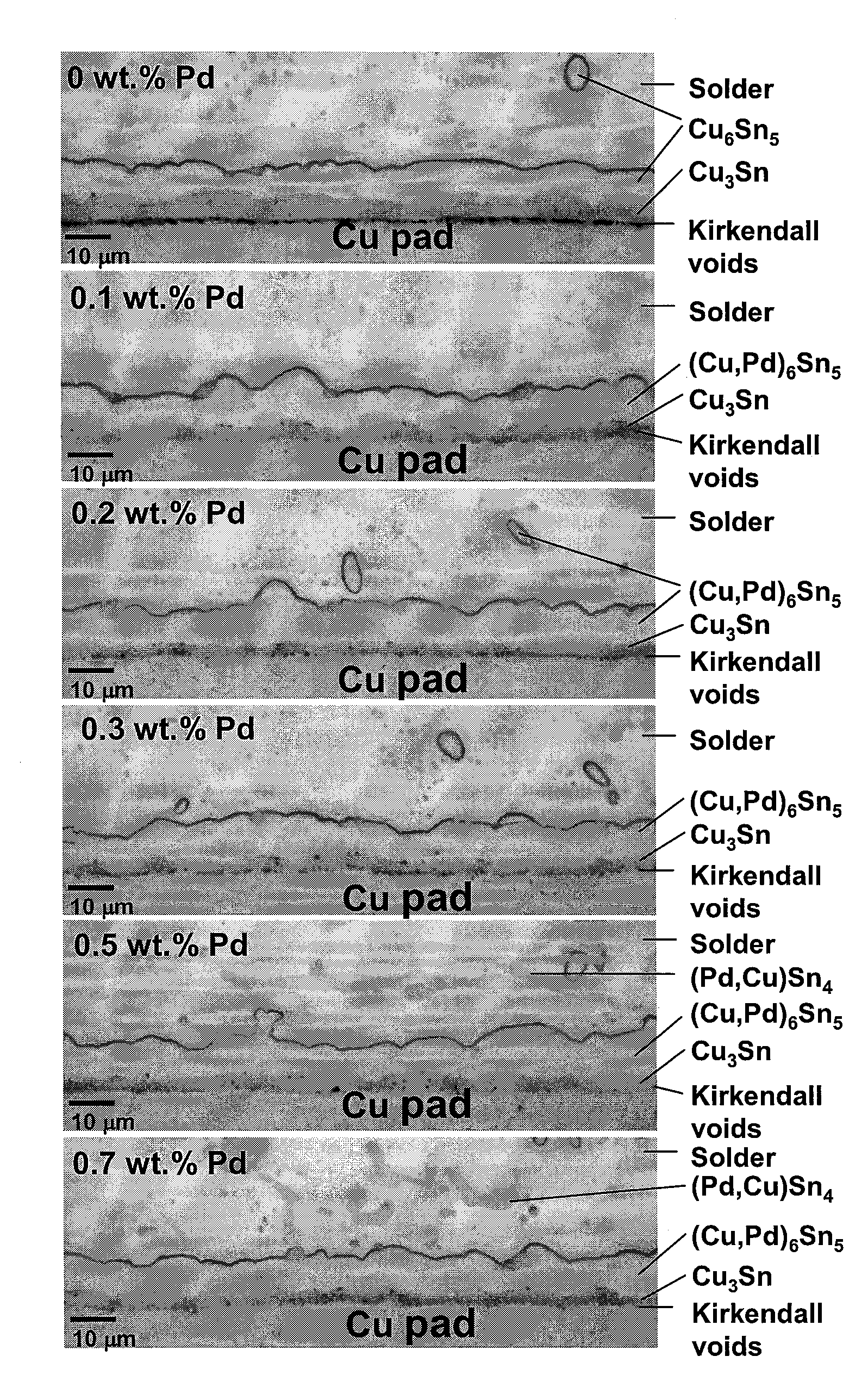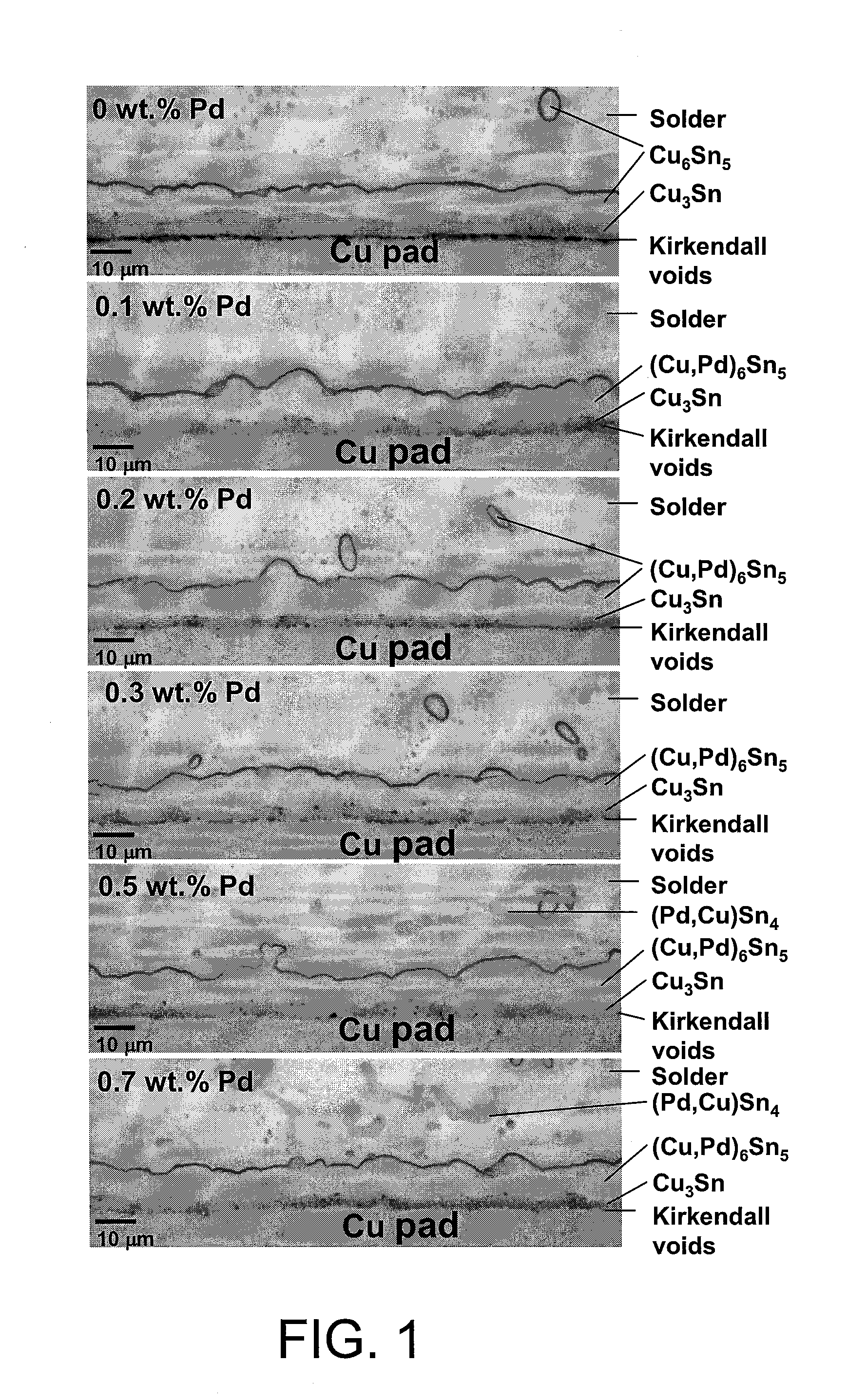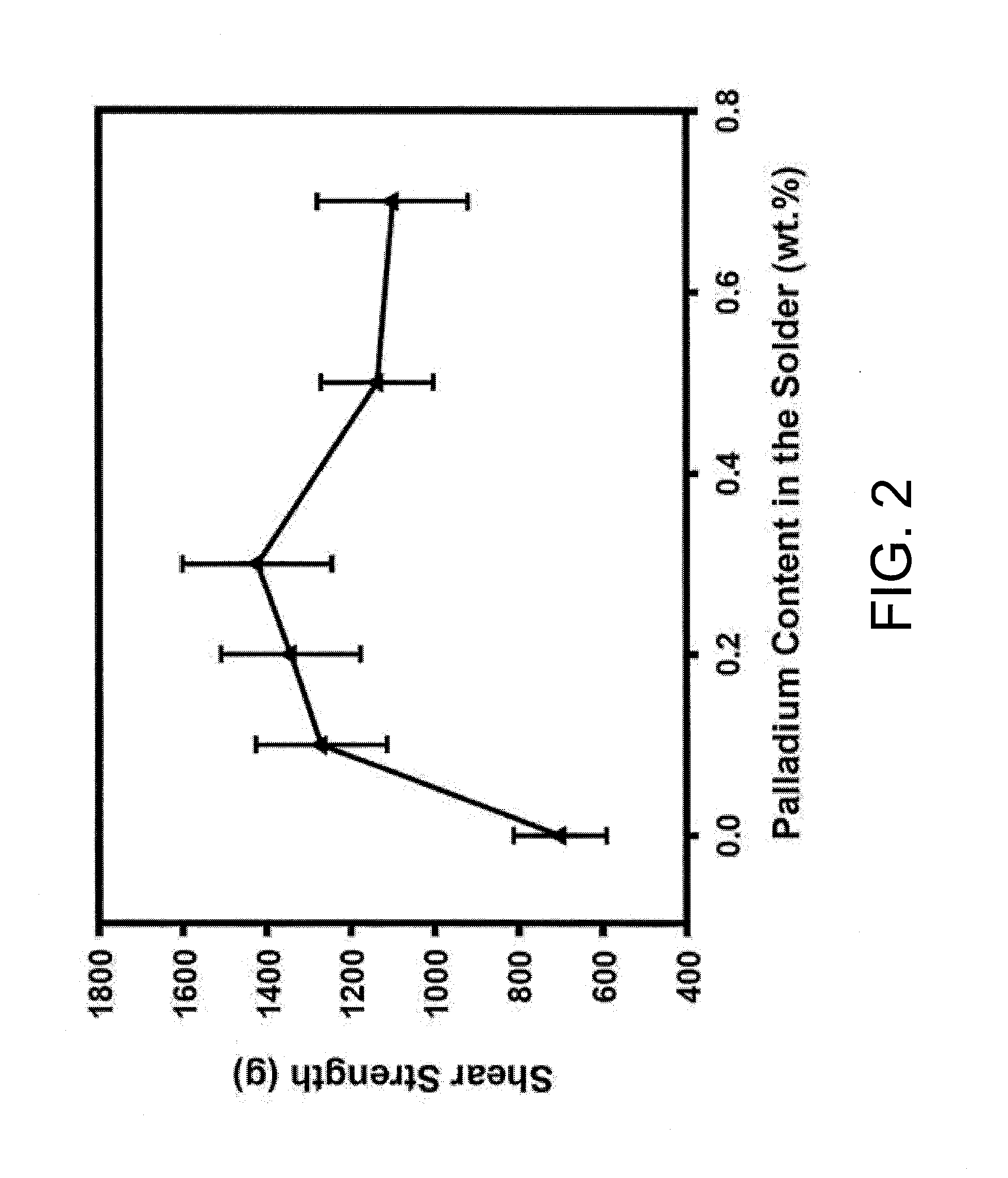Method for suppressing kirkendall voids formation at the interface between solder and copper pad
a technology of kirkendall voids and copper pads, which is applied in the direction of welding/cutting media/materials, manufacturing tools, and soldering apparatus, etc., can solve the problems of mechanical/electrical degradation of solder joints
- Summary
- Abstract
- Description
- Claims
- Application Information
AI Technical Summary
Benefits of technology
Problems solved by technology
Method used
Image
Examples
Embodiment Construction
[0019]Several remedies have been proposed in the past few years for suppressing Kirkendall voids formation at the interface between a solder and a copper pad. The first method is to deposit an additional metal film over the copper pad as a diffusion barrier that is not allowable to be removed during soldering or subsequently solid-state aging. The second is to fine-tune the interfacial microstructures by doping a certain amount of element(s) into the solder or the copper pad before soldering.
[0020]In the first method, the interdiffusion between copper (copper pad) and tin atoms (solder) is prohibited by the diffusion barrier, thereby avoiding the formation of Cu-Sn IMCs and Kirkendall voids at the interface between the copper pad and the solder. The nickel-based metal, such as pure nickel (Ni), nickel-copper (Ni-Cu) alloy, nickel-vanadium (Ni-V) alloy, or nickel-phosphorus (Ni-P) alloy, is realized to be the diffusion barrier material of choice. However, the wettability between the ...
PUM
| Property | Measurement | Unit |
|---|---|---|
| diameter | aaaaa | aaaaa |
| temperature | aaaaa | aaaaa |
| thickness | aaaaa | aaaaa |
Abstract
Description
Claims
Application Information
 Login to View More
Login to View More - R&D
- Intellectual Property
- Life Sciences
- Materials
- Tech Scout
- Unparalleled Data Quality
- Higher Quality Content
- 60% Fewer Hallucinations
Browse by: Latest US Patents, China's latest patents, Technical Efficacy Thesaurus, Application Domain, Technology Topic, Popular Technical Reports.
© 2025 PatSnap. All rights reserved.Legal|Privacy policy|Modern Slavery Act Transparency Statement|Sitemap|About US| Contact US: help@patsnap.com



